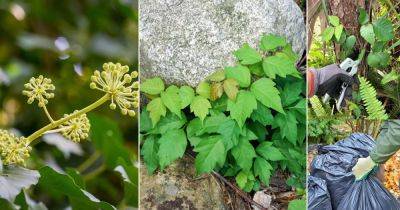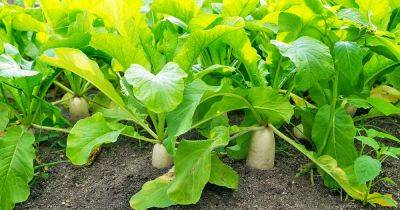How to Plant and Grow Daikon: Add Some Zing to Your Garden Raphanus sativus var. Longipinnatus
Comparing Biodegradable Plant Pots
09.02.2024 - 10:46 / gardengatemagazine.com
Comparing Biodegradable Plant Pots Want to use less plastic when starting seeds? We tried out several different biodegradable pots. Check out our comparison to see which one works for you! The breakdown on biodegradable pots
To start seeds and get young plants growing, I’ve always defaulted to the traditional plastic pot. But I’ve gotten tired of cleaning and storing an ever-growing pile of non-recycleable pots. So in the interest of using less plastic, I searched out biodegradable pot options. I wanted to know how they compare: Were they easy to use? Did they inhibit root growth? Did they break down in one growing season?
Testing different types of biodegradable potsFor this admittedly unscientific, anecdotal experiment, I planted Xochi Orange marigolds (Tagetes hybrid) in eight different kinds of biodegradable pots. I started them indoors in the same potting mix under the same lights, watered and fertilized them at the same time and grew them there for almost 10 weeks — longer than I planned to, but the weather wasn’t cooperating for transplanting. I was surprised to note that my seedlings all grew quite differently indoors, as you can see in the photo above taken right before transplanting into the garden. But once planted outdoors (pot and all in the soil) in a raised bed, the marigold plants all evened out within a couple of weeks and I couldn’t tell the difference between them as they grew and bloomed.
End-of-the-season checkAt the end of the season after a frost, I dug up the plants. Some roots appeared slightly obstructed by the container materials, growing over the top or through the bottom drainage holes, but all of the plants had grown and thrived. And though in varying states of decomposition, I could still

A botanical Pompeii: we found spectacular Australian plant fossils from 30 million years ago
Header image: Details of a silicified fern fossil. Geoff Thompson/Queensland Museum

Clematis for Pots and Containers
Use a large pot, bigger the better as the roots need room to grow and the soil needs to hold moisture. 18″ depth and diameter are needed. Use good quality compost and add a slow release fertiliser. Top dress each year and add more slow release fertiliser. Repot when the compost is totally denuded of goodness, perhaps every 5 years. Plant deeply as you would in the garden, to avoid clematis wilt. Water regularly and avoid drying winds and strong sunshine. Support the vine with a good quality, firm framework.

What Does Poison Ivy Look Like + How to Get Rid of Poison Ivy Plant
What Does Poison Ivy Look Like? If this is a question lurking in your mind and you are looking for ways on How to Get Rid of Poison Ivy Plant, then here are all the information for you!

Coleus Varieties: Favorite picks for gardens, borders, and pots
When we talk about foliage superstars, coleus has to be at the top of the list. The breadth of options is vast and colorful. Depending on the garden center you’re at, you can choose from a rainbow of leaf patterns, colors, and shapes, as well as plant sizes.

Repotting a Spider Plant | How to Repot a Spider Plant
Repotting a spider plant is essential to ensure it continues to stay healthy – it also keeps the roots from detangling and rot.

9 Amazing Rubber Plant Benefits
Rubber plants (Ficus elastica) are revered not only for their lush, glossy leaves but also for their remarkable benefits and intriguing facts. As popular houseplants, they not only enhance indoor aesthetics but also purify the air and offer unique insights into the world of botanical wonder. More than being a manageable plant, there are many Rubber Plant Benefits when you grow it indoors, and some of them are listed below.

15 Stunning Variegated Jade Plant Varieties
From tricolor to ripple, these Variegated Jade Plant Varieties pack a right punch of colors and ease of maintenance!

Growing Rosemary From Cuttings | How to Propagate a Rosemary Plant
Rosemary can be used in several dishes, from roasts to cocktails, and adds a unique flavor to your meal or drinks, making it a must have herbs in homes and garden!

12 Vegetables You Should Never Plant Together and Why
If you want to boost the productivity and flavor of your crops in the garden, then check out this list of Vegetables You Should Never Plant Together and Why.

When and How to Water a Jade Plant So It Never Dies
<a href=«https://www.google.com/url?sa=t&rct=j&q=&esrc=» https: target="_blank" rel=«noopener»>Crassula ovata

Rieger Begonia Care: Tips for Healthy, Happy Plants
Cross summer-blooming begonias with some of their cold-tolerant counterparts and you get the Rieger begonia—a great option for a pop of tropical color during the winter season. Pronounced “REE-ger,” the Rieger begonia is a winter flowering plant with blossoms like tea roses. Although these hybrids don’t have any scent, they more than make up for it with their riotously colorful, creamy blooms. Riegers range from reds, pinks, and bright yellows to shades of orange and stark white. What’s more, under the right conditions, they can bloom indoors for several weeks and they’re fairly easy to propagate, too.
